Mingyu Xu
Understanding Transformer from the Perspective of Associative Memory
May 26, 2025Abstract:In this paper, we share our reflections and insights on understanding Transformer architectures through the lens of associative memory--a classic psychological concept inspired by human cognition. We start with the basics of associative memory (think simple linear attention) and then dive into two dimensions: Memory Capacity: How much can a Transformer really remember, and how well? We introduce retrieval SNR to measure this and use a kernel perspective to mathematically reveal why Softmax Attention is so effective. We also show how FFNs can be seen as a type of associative memory, leading to insights on their design and potential improvements. Memory Update: How do these memories learn and evolve? We present a unified framework for understanding how different Transformer variants (like DeltaNet and Softmax Attention) update their "knowledge base". This leads us to tackle two provocative questions: 1. Are Transformers fundamentally limited in what they can express, and can we break these barriers? 2. If a Transformer had infinite context, would it become infinitely intelligent? We want to demystify Transformer architecture, offering a clearer understanding of existing designs. This exploration aims to provide fresh insights and spark new avenues for Transformer innovation.
Amplify Adjacent Token Differences: Enhancing Long Chain-of-Thought Reasoning with Shift-FFN
May 22, 2025Abstract:Recently, models such as OpenAI-o1 and DeepSeek-R1 have demonstrated remarkable performance on complex reasoning tasks through Long Chain-of-Thought (Long-CoT) reasoning. Although distilling this capability into student models significantly enhances their performance, this paper finds that fine-tuning LLMs with full parameters or LoRA with a low rank on long CoT data often leads to Cyclical Reasoning, where models repeatedly reiterate previous inference steps until the maximum length limit. Further analysis reveals that smaller differences in representations between adjacent tokens correlates with a higher tendency toward Cyclical Reasoning. To mitigate this issue, this paper proposes Shift Feedforward Networks (Shift-FFN), a novel approach that edits the current token's representation with the previous one before inputting it to FFN. This architecture dynamically amplifies the representation differences between adjacent tokens. Extensive experiments on multiple mathematical reasoning tasks demonstrate that LoRA combined with Shift-FFN achieves higher accuracy and a lower rate of Cyclical Reasoning across various data sizes compared to full fine-tuning and standard LoRA. Our data and code are available at https://anonymous.4open.science/r/Shift-FFN
Baichuan-M1: Pushing the Medical Capability of Large Language Models
Feb 18, 2025Abstract:The current generation of large language models (LLMs) is typically designed for broad, general-purpose applications, while domain-specific LLMs, especially in vertical fields like medicine, remain relatively scarce. In particular, the development of highly efficient and practical LLMs for the medical domain is challenging due to the complexity of medical knowledge and the limited availability of high-quality data. To bridge this gap, we introduce Baichuan-M1, a series of large language models specifically optimized for medical applications. Unlike traditional approaches that simply continue pretraining on existing models or apply post-training to a general base model, Baichuan-M1 is trained from scratch with a dedicated focus on enhancing medical capabilities. Our model is trained on 20 trillion tokens and incorporates a range of effective training methods that strike a balance between general capabilities and medical expertise. As a result, Baichuan-M1 not only performs strongly across general domains such as mathematics and coding but also excels in specialized medical fields. We have open-sourced Baichuan-M1-14B, a mini version of our model, which can be accessed through the following links.
LongReD: Mitigating Short-Text Degradation of Long-Context Large Language Models via Restoration Distillation
Feb 11, 2025Abstract:Large language models (LLMs) have gained extended context windows through scaling positional encodings and lightweight continual pre-training. However, this often leads to degraded performance on short-text tasks, while the reasons for this degradation remain insufficiently explored. In this work, we identify two primary factors contributing to this issue: distribution drift in hidden states and attention scores, and catastrophic forgetting during continual pre-training. To address these challenges, we propose Long Context Pre-training with Restoration Distillation (LongReD), a novel approach designed to mitigate short-text performance degradation through minimizing the distribution discrepancy between the extended and original models. Besides training on long texts, LongReD distills the hidden state of selected layers from the original model on short texts. Additionally, LongReD also introduces a short-to-long distillation, aligning the output distribution on short texts with that on long texts by leveraging skipped positional indices. Experiments on common text benchmarks demonstrate that LongReD effectively preserves the model's short-text performance while maintaining comparable or even better capacity to handle long texts than baselines.
KV Shifting Attention Enhances Language Modeling
Nov 29, 2024Abstract:The current large language models are mainly based on decode-only structure transformers, which have great in-context learning (ICL) capabilities. It is generally believed that the important foundation of its ICL capability is the induction heads mechanism, which requires at least two layers attention. In order to more efficiently implement the ability of the model's induction, we revisit the induction heads mechanism and proposed a KV shifting attention. We theoretically prove that the KV shifting attention reducing the model's requirements for the depth and width of the induction heads mechanism. Our experimental results demonstrate that KV shifting attention is beneficial to learning induction heads and language modeling, which lead to better performance or faster convergence from toy models to the pre-training models with more than 10 B parameters.
Class-balanced Open-set Semi-supervised Object Detection for Medical Images
Aug 22, 2024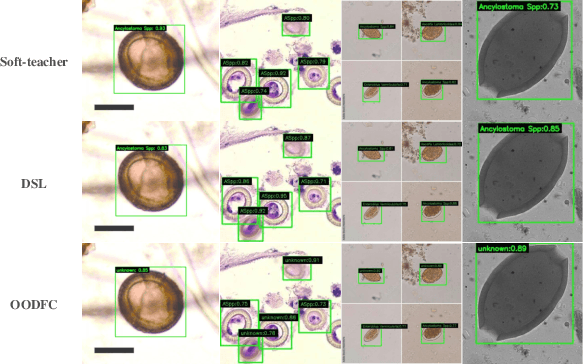
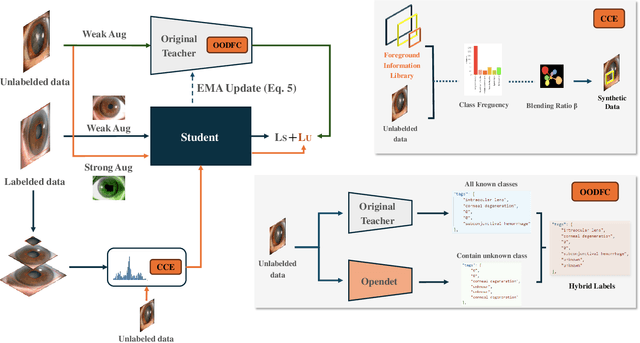
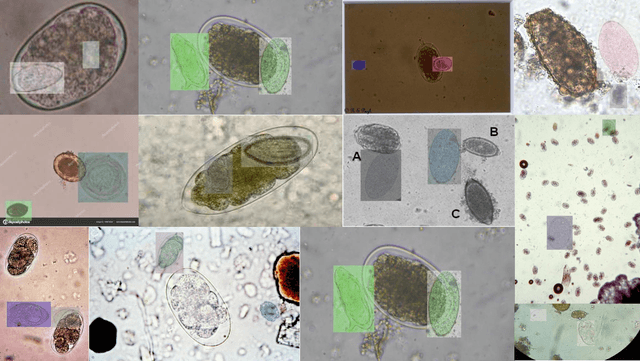
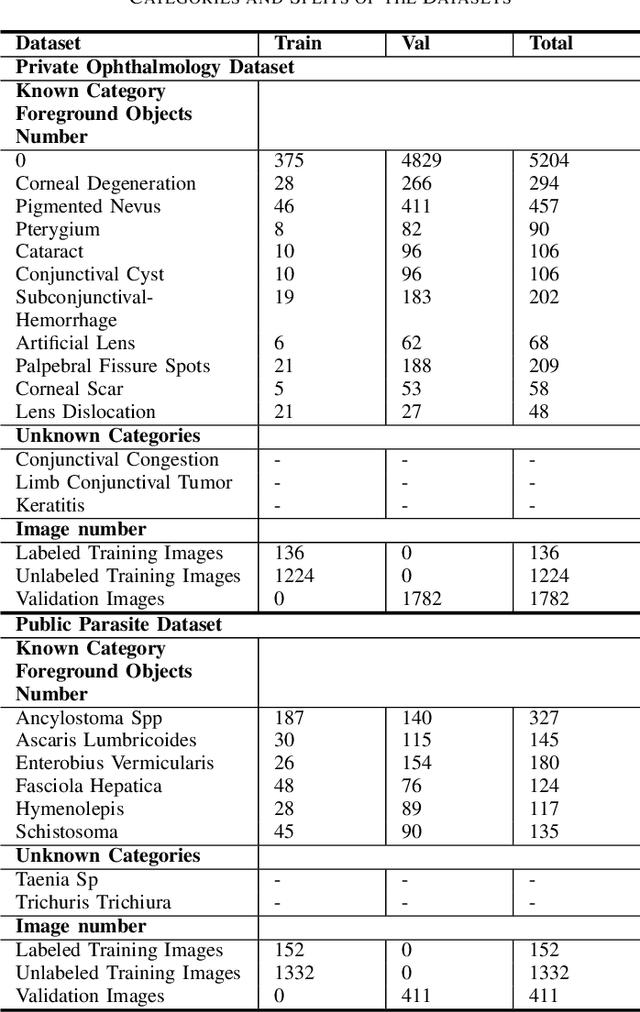
Abstract:Medical image datasets in the real world are often unlabeled and imbalanced, and Semi-Supervised Object Detection (SSOD) can utilize unlabeled data to improve an object detector. However, existing approaches predominantly assumed that the unlabeled data and test data do not contain out-of-distribution (OOD) classes. The few open-set semi-supervised object detection methods have two weaknesses: first, the class imbalance is not considered; second, the OOD instances are distinguished and simply discarded during pseudo-labeling. In this paper, we consider the open-set semi-supervised object detection problem which leverages unlabeled data that contain OOD classes to improve object detection for medical images. Our study incorporates two key innovations: Category Control Embed (CCE) and out-of-distribution Detection Fusion Classifier (OODFC). CCE is designed to tackle dataset imbalance by constructing a Foreground information Library, while OODFC tackles open-set challenges by integrating the ``unknown'' information into basic pseudo-labels. Our method outperforms the state-of-the-art SSOD performance, achieving a 4.25 mAP improvement on the public Parasite dataset.
Base of RoPE Bounds Context Length
May 23, 2024



Abstract:Position embedding is a core component of current Large Language Models (LLMs). Rotary position embedding (RoPE), a technique that encodes the position information with a rotation matrix, has been the de facto choice for position embedding in many LLMs, such as the Llama series. RoPE has been further utilized to extend long context capability, which is roughly based on adjusting the \textit{base} parameter of RoPE to mitigate out-of-distribution (OOD) problems in position embedding. However, in this paper, we find that LLMs may obtain a superficial long-context ability based on the OOD theory. We revisit the role of RoPE in LLMs and propose a novel property of long-term decay, we derive that the \textit{base of RoPE bounds context length}: there is an absolute lower bound for the base value to obtain certain context length capability. Our work reveals the relationship between context length and RoPE base both theoretically and empirically, which may shed light on future long context training.
Multimodal Fusion with Pre-Trained Model Features in Affective Behaviour Analysis In-the-wild
Mar 22, 2024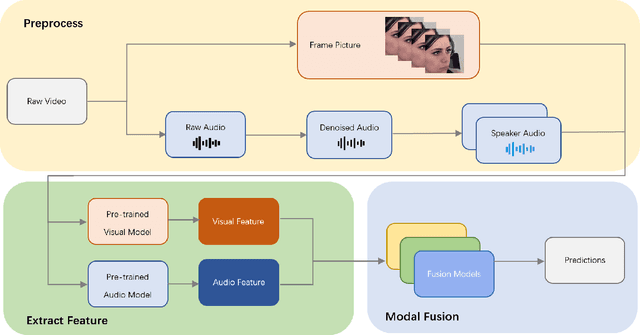
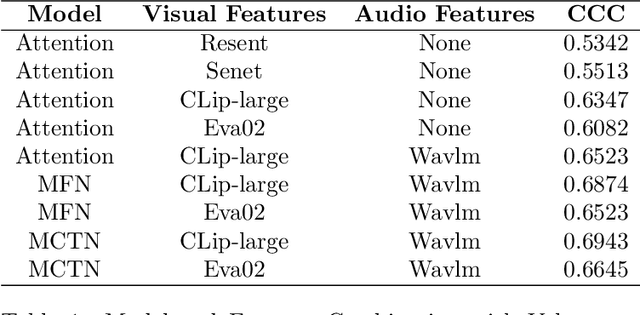

Abstract:Multimodal fusion is a significant method for most multimodal tasks. With the recent surge in the number of large pre-trained models, combining both multimodal fusion methods and pre-trained model features can achieve outstanding performance in many multimodal tasks. In this paper, we present our approach, which leverages both advantages for addressing the task of Expression (Expr) Recognition and Valence-Arousal (VA) Estimation. We evaluate the Aff-Wild2 database using pre-trained models, then extract the final hidden layers of the models as features. Following preprocessing and interpolation or convolution to align the extracted features, different models are employed for modal fusion. Our code is available at GitHub - FulgenceWen/ABAW6th.
ShortGPT: Layers in Large Language Models are More Redundant Than You Expect
Mar 07, 2024Abstract:As Large Language Models (LLMs) continue to advance in performance, their size has escalated significantly, with current LLMs containing billions or even trillions of parameters. However, in this study, we discovered that many layers of LLMs exhibit high similarity, and some layers play a negligible role in network functionality. Based on this observation, we define a metric called Block Influence (BI) to gauge the significance of each layer in LLMs. We then propose a straightforward pruning approach: layer removal, in which we directly delete the redundant layers in LLMs based on their BI scores. Experiments demonstrate that our method, which we call ShortGPT, significantly outperforms previous state-of-the-art (SOTA) methods in model pruning. Moreover, ShortGPT is orthogonal to quantization-like methods, enabling further reduction in parameters and computation. The ability to achieve better results through simple layer removal, as opposed to more complex pruning techniques, suggests a high degree of redundancy in the model architecture.
SVFAP: Self-supervised Video Facial Affect Perceiver
Dec 31, 2023



Abstract:Video-based facial affect analysis has recently attracted increasing attention owing to its critical role in human-computer interaction. Previous studies mainly focus on developing various deep learning architectures and training them in a fully supervised manner. Although significant progress has been achieved by these supervised methods, the longstanding lack of large-scale high-quality labeled data severely hinders their further improvements. Motivated by the recent success of self-supervised learning in computer vision, this paper introduces a self-supervised approach, termed Self-supervised Video Facial Affect Perceiver (SVFAP), to address the dilemma faced by supervised methods. Specifically, SVFAP leverages masked facial video autoencoding to perform self-supervised pre-training on massive unlabeled facial videos. Considering that large spatiotemporal redundancy exists in facial videos, we propose a novel temporal pyramid and spatial bottleneck Transformer as the encoder of SVFAP, which not only enjoys low computational cost but also achieves excellent performance. To verify the effectiveness of our method, we conduct experiments on nine datasets spanning three downstream tasks, including dynamic facial expression recognition, dimensional emotion recognition, and personality recognition. Comprehensive results demonstrate that SVFAP can learn powerful affect-related representations via large-scale self-supervised pre-training and it significantly outperforms previous state-of-the-art methods on all datasets. Codes will be available at https://github.com/sunlicai/SVFAP.
 Add to Chrome
Add to Chrome Add to Firefox
Add to Firefox Add to Edge
Add to Edge